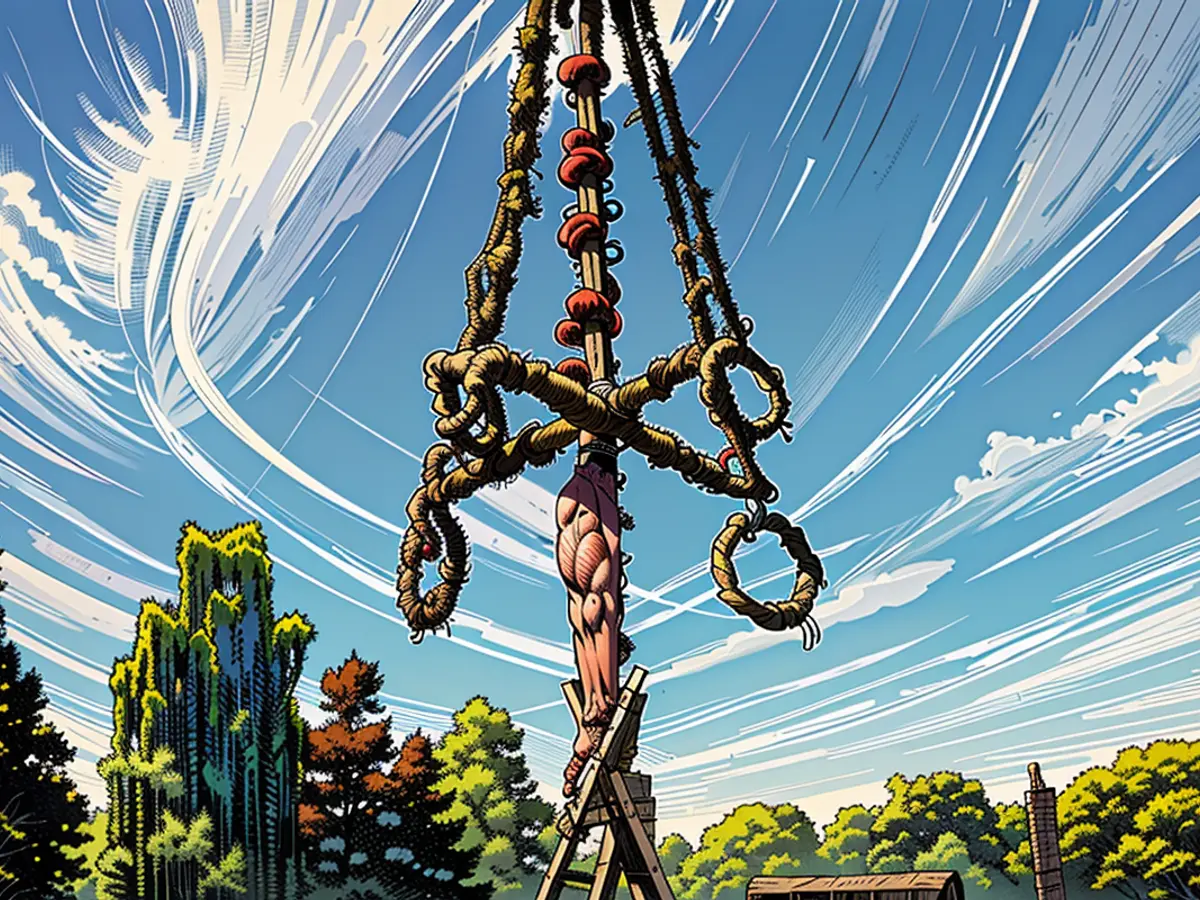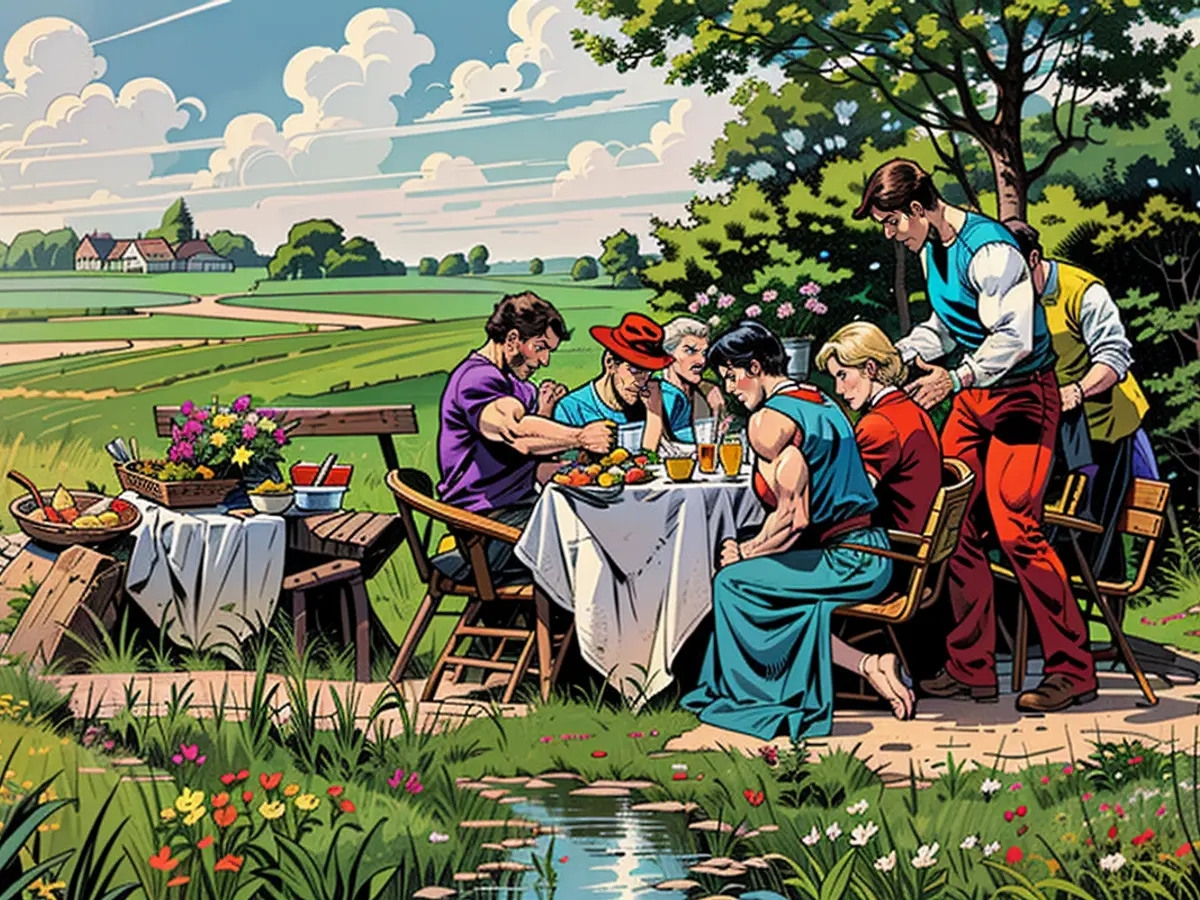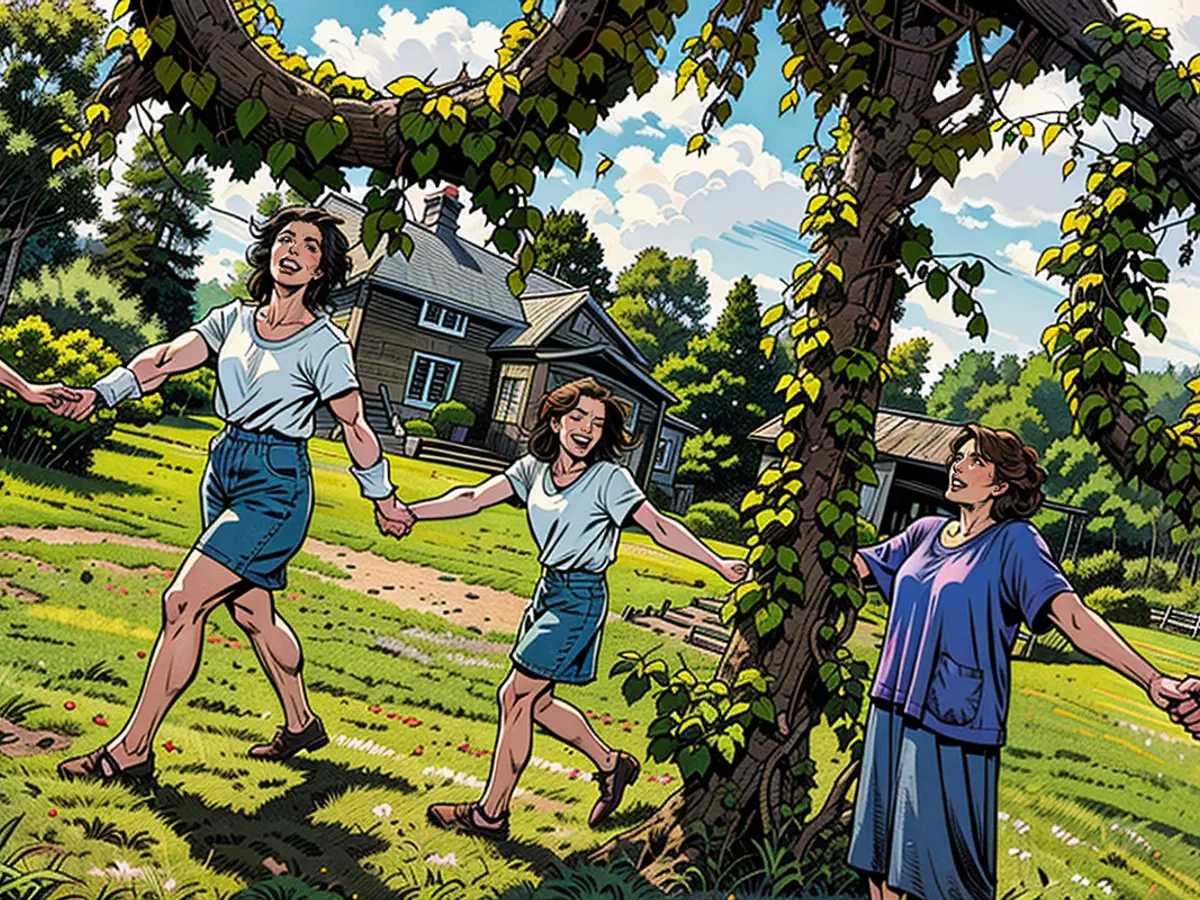Ancient Pagan Customs Persist during Sweden's Midsummer Celebration
You've perhaps been told that the longest day of the year, the summer solstice, is a significant occasion in Scandinavia, particularly in Sweden. And it surely is! While various nations in Northern Europe and Eastern Europe celebrate this period in unique ways, the Swedes definitely put on a grand show.
Midsummer is the ultimate Swedish festivity and a notable event on their cultural calendar. For many, it's not just a holiday, but an opportunity to indulge and let loose, whether that was the original intention or not. Swedes anticipate this holiday and plan for it months in advance.
Typically, celebrations take place with friends and family at summer homes. With a substantial number of summer cottages per capita, Sweden is home to plenty of those charming little red houses nestled within fields or by the coast.
The traditional Midsummer lunch is a high point of the celebration, featuring a smorgasbord of pickled herring, dill-seasoned new potatoes, smoked salmon, cheese quiches, meatballs, and strawberry and whipped cream cake for dessert. To wash it all down, they enjoy shots of snaps (Aquavit) while singing traditional songs.
Before the festive meal, there's a customary dance around the maypole. Historically, a maypole adorned with birch leaves and wildflowers is raised and participants dance around it while singing and holding hands. However, during "The Little Frogs" dance, participants leap around like amphibians, wave their hands around their head and bottom, and make quacking noises. needless to say, this makes perfect sense to the Swedes.
As Alicia Vikander explained to Kimmel, "Everyone between the ages of five and 95 in Sweden knows this dance and does it every year."
Midsummer at the world’s oldest open-air museum
The tradition of the maypole dates back to the Middle Ages, while the solstice celebration can be traced to Norse pagan times, when the culture was deeply intertwined with the mystical natural world. During Midsummer night, the boundary between the physical and spiritual realms was supposedly blurred, and plants were believed to possess potent healing powers and could be used for fortune-telling.
Young women would pick seven different wildflowers and place them under their pillows to dream of their future husbands, a practice that is still popular today. Wearing a flower wreath in your hair has been an age-old symbol of rebirth and fertility, and these wreaths were often kept throughout the year, sometimes used to infuse the Christmas bath to keep the family healthy during the long, cold winter.
Walking barefoot in the dewy grass on Midsummer morning or, even better, rolling around in it naked, was believed to ensure good health.
Midsummer Eve is always observed on a Friday between June 19 and 25. This year, it falls on June 21. However, in many parts of Sweden, celebrations are held throughout the entire Midsummer weekend.
One such place is Skansen. As the world's oldest open-air museum, it showcases various regions of Sweden with houses and farmsteads from every part of the country.
At Skansen, solstice celebrations commence mid-morning on Midsummer's Eve with wreath-making and a Midsummer market. At 11 a.m., everyone gathers to witness the maypole being raised, followed by the dancing and games. To the infectious sound of folk music played by Skansen's musicians, the festivities continue, with the folk dancers leading the routines, including the frog dance.
Since there is a large influx of international visitors, the emcee explains the program in both Swedish and English, ensuring everyone can participate. If you prefer to be a spectator, the folk dance troupe also performs traditional peasant dances accompanied by fiddlers and harpists throughout the day.
However, for others, the highlight is the evening dance. It's a tribute to the public dances that were popular in the 1950s and '60s, both in Sweden and the United States. Anette Björlin, program officer at Skansen, notes that Midsummer at Skansen is an event that many eagerly anticipate.
"Last year, we had around 28,000 visitors on Midsummer Eve alone," says Björlin. "The record is 35,000. Families arrive early in the morning to participate in the child-friendly activities, and we then have a steady stream of people joining in the dancing all day long."
Myths and legends
Undeniably, Midsummer continues to evoke a sense of magic and wonder, even if modern Swedes no longer roll around naked in the morning dew. Young women still pick wildflowers and place them under their pillows to dream of their future spouses, and so on.

Throughout history, people have sought out nature for medicinal purposes and to predict the future. However, it's difficult to determine exactly how far back these traditions date, as there is a lack of written documentation.
"Many aspects of our celebrations can be traced back to medieval times, and it's possible that some even date back to the Vikings," says Kerstin Holm Söderkvist, heritage interpreter at Skansen. "But we can't be entirely sure. There are so many parallel stories associated with Midsummer, partly because the church rebranded it as a Christian holiday celebrating John the Baptist instead of pagan beliefs."
She debunks the common idea that the maypole symbolizes a pagan fertility ritual. Instead, she reckons it's more of a German influence, comparable to the Christmas tree.
Midsummer is also a significant food festival, as shown by the traditional lunch discussed earlier.
Holm Söderkvist elaborates, stating that in the traditional Swedish farming society, Midsummer lunch marks a welcome respite after extended brutal winters, with only soup and oatmeal as primary food sources. Finally, the arrival of freshly harvested, seasonal produce brings about a delightful feast.
Luckily, the Swedish diet has significantly evolved, and nowadays, Midsummer signifies the onset of the much-anticipated vacation season. The majority of Swedes take around four to five weeks off during the summer, with five weeks of annual leave being a statutory privilege. This period is all about relaxation, visiting family and friends, and enjoying one's summer cottage, festively decorated for Midsummer.
Holm Söderkvist and companions are set to indulge in the traditional feast at their summer house by a lake in the serene Värmland province. She views Midsummer as not just a link to cultural roots, but also an essential social event.
"It's a highly inclusive event, fostering participation from people of all ages and backgrounds," she says. "You only need a picnic hamper to join the festivities in a nearby park."
Summer solstice in London and New York
These park gatherings aren't exclusive to Sweden. Expat Swedes living abroad often experience increased homesickness during the summer solstice and seek out Midsummer celebrations in their host cities. Cities like London and New York, with considerable Swedish populations, host popular Midsummer parties.
A spontaneous get-together in London's Hyde Park has evolved into an annual tradition, growing in size due to social media. Often taking place on a Saturday - the actual Midsummer's Day instead of Eve - it draws hundreds, if not thousands of people.
One maypole is always erected, and the celebrations continue until the park closes at midnight.
For those desiring a more sophisticated celebration, the LondonSwedes community organized a gourmet dinner on Midsummer's Eve and a lunch on Midsummer's Day at Niklas Ekstedt's restaurant, Ekstedt at The Yard, near the Great Scotland Yard Hotel. Guests can expect flower garlands, live music, and plenty of snaps and singing.
Charlotte Ågren, the group's founder, shares her perspective: "Swedes are generally seen as reserved, but at Midsummer, we let loose. The snaps helps."
To Ågren, celebrating Midsummer goes beyond preserving a treasured tradition; it's also an opportunity to showcase Swedish culture to her British and international friends.
"It's a joyous occasion that we're proud to extend invitations to our wider circle to partake in," she says.
"I'd estimate around a third of London revelers are people of all nationalities who simply embrace the tradition and love a good party."

Read also:
Traveling to Sweden during Midsummer allows you to immerse yourself in the country's rich cultural traditions and festivities.
Visiting Skansen during Midsummer night offers a unique opportunity to witness and participate in age-old customs and practices.
- Fear of escalation in the Middle East: US Secretary of State Blinken travels to the region again
- Government circles: US Secretary of State Blinken to travel to Middle East again
- Bridging days 2024: How you can double your vacation this year
- Germany has wanderlust: how tour operators and airlines are looking ahead to the next travel year








